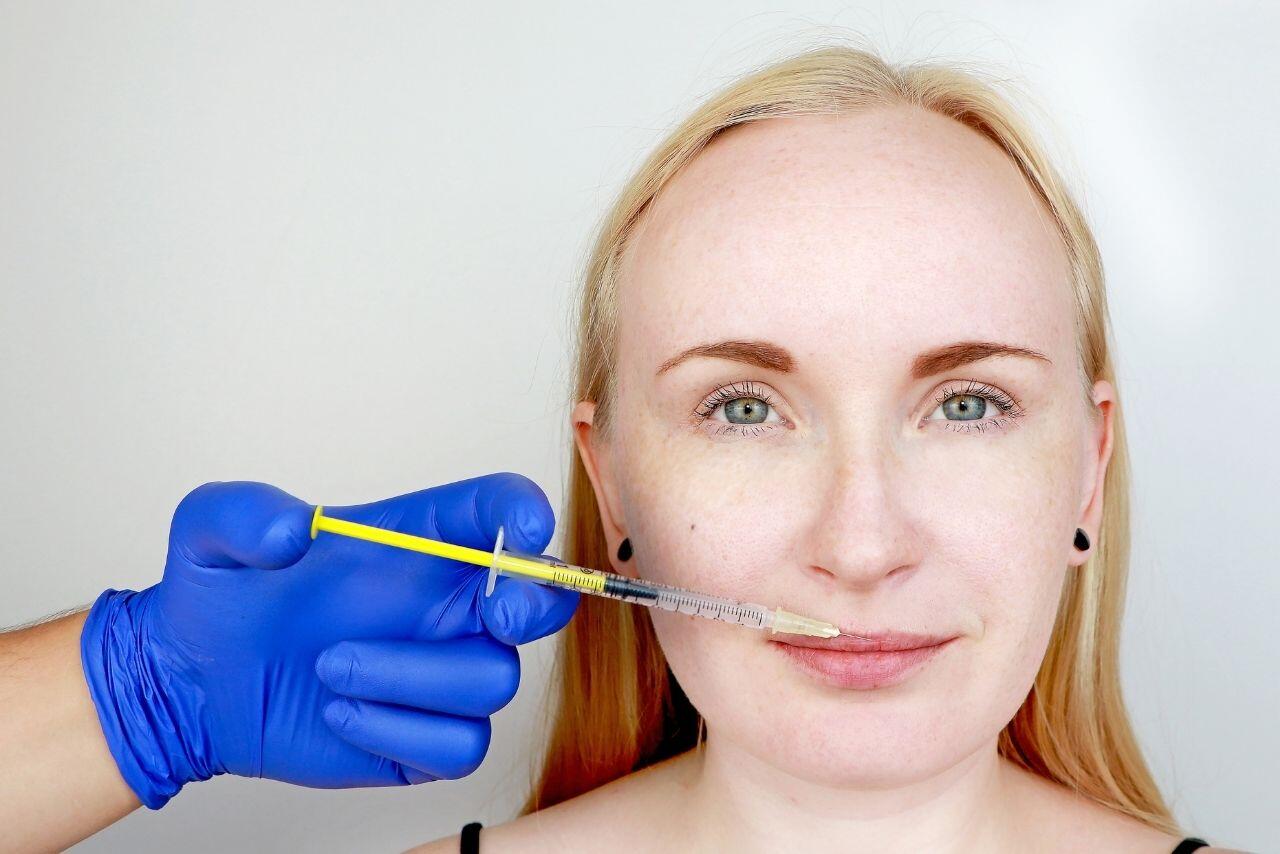
While cosmetic filler injection procedures are non-invasive and safe, patients may sometimes experience some discomfort during the treatment session. They may also see slight bruising in the days following the procedure. In order to minimize discomfort during the procedure, and treat bruising which can develop after, there are several steps you can take.
How to Identify Bruising
Bruising presents itself as a slight discoloration of the patient’s skin and is a common side effect of filler injections. Studies show that bruising occurs in a range of 19 to 68 percent of patients, and it should not be cause for concern. Certain facial areas, such as the upper lip and around the eyes, both of which display signs of aging more prominently, can be more susceptible to bruising than others.
However, bruising is not the only discoloration that can occur as a result of filler injection treatments, and others are not as superficial. An adverse effect that can be mistaken for bruising is the Tyndall effect. Be sure to inform your patients of this effect and advise them to contact you if they suspect the discoloration they’re experiencing is caused by the Tyndall effect, rather than being simple bruising.
What is the Tyndall Effect?
The Tyndall effect occurs when hyaluronic acid injections are injected too superficially. As hyaluronic acid fillers consist of a clear gel, the light that reflects through the implant appears blue. When a patient experiences the Tyndall effect, their skin will have a bluish tint where the filler sits.
Unlike bruising, the discoloration from the Tyndall effect won’t resolve by itself in a matter of days. The only way to get rid of this bluish tint to remove the filler. Patients can wait for the filler to break down without intervention, which will take months, or they can visit a licensed injector. The injector can use hyaluronidase to dissolve the filler and thereby remove the discoloration.
How to Reduce Bruising
There are several steps that the injector can perform during the procedure to prevent or reduce bruising. Additionally, patients can play a role, by avoiding certain medications before treatment, to reduce discomfort and bruising following the procedure.
Patient Treatment Position
One simple precaution that can help reduce bruising is to ensure that the patient is properly positioned during the procedure. Recline your treatment chair at a 30-degree angle and have the patient place their head securely against the headrest. Brace your hands against the patient to reduce hand movement and trauma should the patient move unexpectedly. The room where you perform the procedure should be well-lit so you are better able to view blood vessels, which should be avoided. Another useful preventative step is for the patient to wipe their skin free of makeup or other material prior to injection. Always ensure you have a clear view of where you are injecting in order to avoid placing filler in areas where you shouldn’t (i.e. blood vessels).
Instruments Used
While some injectable fillers require large caliber syringes, it is always best to use a small gauge whenever possible. Smaller needles are less likely to cause bruising, as they do not transect blood vessels as easily as large needles. The ideal instrument is a typically considered to be a 30-gauge needle. Studies have shown that there’s no need to go smaller, as it has been demonstrated that there was no statistically significant difference between a 30 and 32-gauge needle when injecting most fillers.
Blunt-tipped microcannulas are also a great option, if you wish to reduce bruising. The reason is two-fold: a blunt tip is less likely to cut a blood vessel, and a longer microcannula requires fewer entry points. Practitioners have observed less bruising when using blunt-tipped microcannulas, particularly when utilizing a fanning injection technique.
Products Patients Should Avoid
Patients can play a role in reducing bruising with proper preparation prior to treatment. There are a number of medications which are known to increase bruising. If the medications are not considered medically necessary, patients should stop taking them five to seven days before the procedure. If the patient is unable to stop taking their medications, advise them of the potential increased risk of bruising. Medications and supplements which can cause bruising include:
- Vitamin E
- Garlic
- Ginko biloba
- St. John’s Wort
- Ginseng
- Flaxseed oils
- Fish oils and omega 3
- Aspirin and other salicylates
- Clopidogrel
- Warfarin
- Ibuprofen and other NSAIDS
- Dabigatran
- Dipyridamole ticlopidine
How to Treat Bruises
The body’s ability to heal bruising varies by person, so while some patients may only experience a few days of bruising, it may take up to two weeks for others to self-resolve. The most important part of bruise treatment is the aftercare following injection. Following the treatment, hold a cold compress to the injection site using light pressure. Advise patients to avoid touching the injection area in the hours following treatment, other than to gently apply topical creams.
Topical solutions which can be applied to heal bruises include arnica, bromelain, and high-dose vitamin K. These can decrease the formation of ecchymosis and help to reduce bruising. Consuming Arnica Montana for two days prior to and in the days following the procedure can also help treat or minimize bruises.
Strenuous exercise should also be avoided in the days following treatment. The increased heart rate, blood pressure, and blood flow caused by exercise can make it more difficult for damaged capillaries to heal. Light activities such as walking will not affect bruising and swelling – these are safe to perform. If patients are self-conscious of the bruising, they can safely apply makeup to the discoloration. However, advise them not to apply too much pressure on the skin during the makeup application.

Doris Dickson is an expert voice on cosmetic medical treatments and products, writing for Health Supplies Plus, a premier online resource for the medical community. Her concise, no-nonsense takes spotlight the tools and techniques shaping modern aesthetics.
